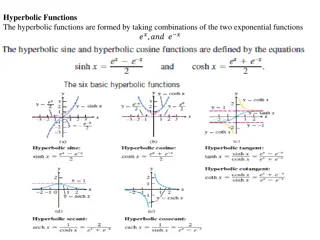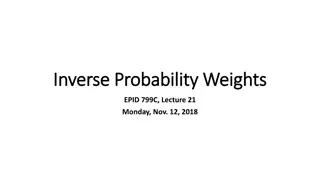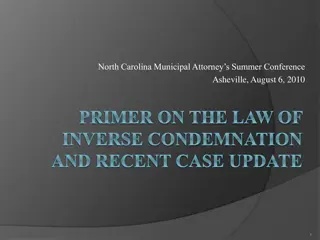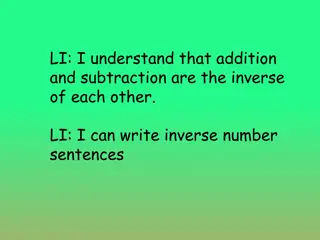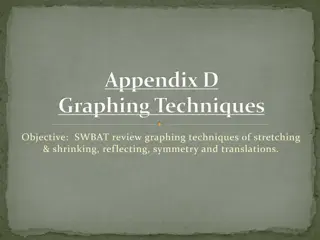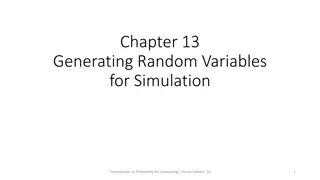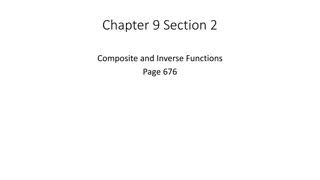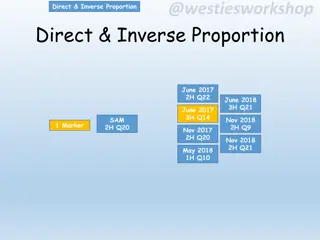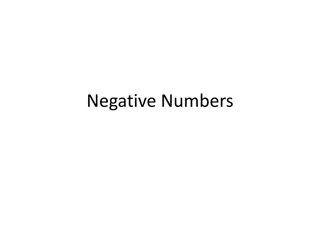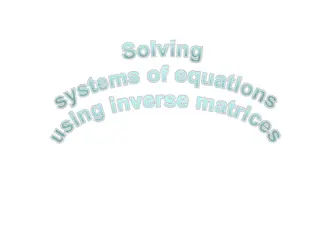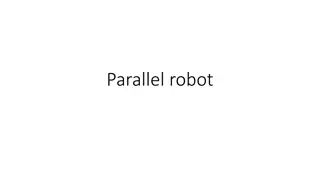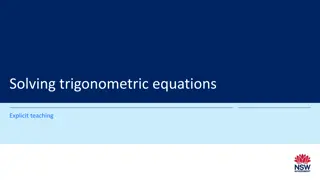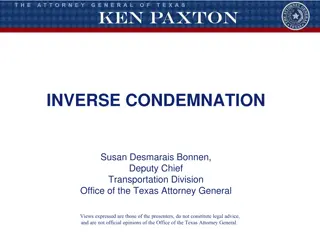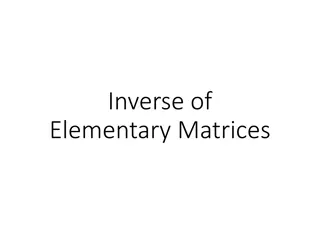
Understanding Inverse Functions and Their Applications
Explore the concept of inverse functions, how they are defined, and learn how to determine the inverse function of a given function through examples. Discover the rules and methods for finding inverse functions analytically.
Download Presentation

Please find below an Image/Link to download the presentation.
The content on the website is provided AS IS for your information and personal use only. It may not be sold, licensed, or shared on other websites without obtaining consent from the author. If you encounter any issues during the download, it is possible that the publisher has removed the file from their server.
You are allowed to download the files provided on this website for personal or commercial use, subject to the condition that they are used lawfully. All files are the property of their respective owners.
The content on the website is provided AS IS for your information and personal use only. It may not be sold, licensed, or shared on other websites without obtaining consent from the author.
E N D
Presentation Transcript
The the set of values, elements have different images in i.e. function, the definition area of here are such that different
A function is defined in a way element element as of each has to be accompanied with a single and write This function function for ( the ) a function is so called an inverse
For one given function meets the condition As we define an inverse function with the following rule an inverse function and: is denoted with
Example 1. Let the set with the following scheme: f Df = to be set to function , , a b c x a b c f(x) 3 5 1 Let s determine its inverse function.
It is the scheme that shows the different elements from the set having different images, so the given function will have the inverse function whereby it is determined by the following scheme: Df = , , a b c 5 , 3 , 1 = ) 1 ( f , 1 : , , f a ) 3 ( b c = = 1 1 1 , ) 5 ( f a b f c x 3 5 1 1x ( ) f a b c
y= (x ) f If the function is analytically given, with a formula then for the convenient determination of this inverse function is required the equation to be solved with x where we get the relation in addition of this, it is usually independently variable so we mark it with x, and the dependently variable is marked with y. In the last equation, we change the role of the variables and the inverse function is ) ( f x g y = = y = (x ) f x = (y ) g 1x ( )
Example 2. Found the inverse function of function 1 + =x y 2 A solution: If 1 + 1 + + + 2 , 2 . . ( ) ( ) x x x x f x f x 1 2 1 2 1 2 2 2 x x 1 2 1 =y If we multiply with the x we will get by changing the equation the role of x and y we get the inverse function. 1 ) ( = x f 2 x , and then 1 2 x
Example 3. The inverse function of 1 = ) 1 ( y x 3 is needed to be found
From the definition of the inverse function we get: f x f f is D forx f = ( )) ( ( , , g f y f f is V isx f = ( ( )) ( ( , , = = = = 1 1 ) ( ) y g y x 1 )) ( ) y f x y
The inverse function s graph function one, in terms of the first symmetry. is symmetric with the quadrant s f 1 f Example 4. The inverse function s graph is needed to be drawn y = 3 x
Example 5. The set of the values is given to be determined the function for f V x 5 2 + x = y 4 2

